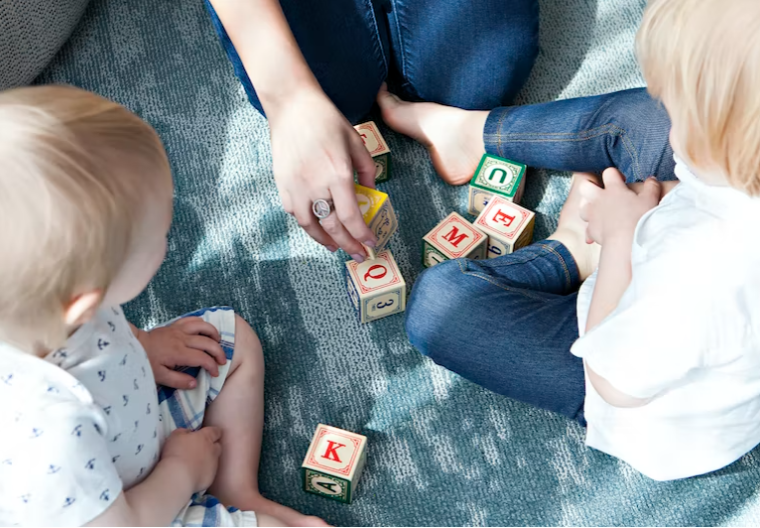How to support children’s language development at home
Caregivers play a crucial role in your children’s language development at home. From the moment a child is born, they are constantly learning and absorbing new language and communication skills. However, it can be stressful or confusing if a child’s language doesn’t seem to be developing as expected.
There are many simple and effective ways to encourage a child’s language development at home, from talking and reading to creating a rich language environment. Research has shown that how many words young children are exposed to is a good predictor of their vocabulary at the point when they begin school. A child’s vocabulary size sets the foundation for a level of success throughout school and even into college (Penn Today). However, more research is indicating that it’s not just about quantity, it’s about quality. Children need to be exposed to a variety of words before they reach kindergarten.

Tips for Supporting Children’s Language Development at Home
By following these tips, caregivers can help build strong language skills that will serve them throughout their life.
- Talk to your child regularly: The more you talk to your child, the more opportunities they have to hear and practice new words and language structures, such as expressing emotion, asking questions, and answering questions. Caregivers should narrate daily tasks, point to things/people/animals in the immediate environment and discuss them, and tell your child the plans for the day and what to expect. Talk, talk, talk!
- Read to your child: Reading to your child exposes them to a wide range of vocabulary and language structures and helps build their listening and comprehension skills. Don’t just stick to reading the words on the page. Change up the story by adding your own words, phrases, and sentences. Read with intonation to reflect the character’s emotions and use matching facial expressions. Point to pictures and have the child describe what they see. Talk about the events and have the child predict what will happen next or what the characters are thinking.
- Encourage your child to talk: Encourage your child to express their thoughts and ideas verbally. Ask them open-ended questions, which refer to wh questions (who, what, when, where) vs. yes/no questions. If your child prefers to point, tell them “use your words” to encourage them to speak. If they are unable to talk, model the language for them.
- Play with your child: Play is an important way for children to learn language and expose them to new vocabulary. Engage in play activities that involve talking. Like activities such as dolls, action figures, or board games that involve taking turns and using language to communicate.
- Provide a rich language environment: Surround your child with a variety of language input, such as books, music, and educational videos. You can use language any time of day- bathtime, meals, getting ready for bed, in the car, etc. Find things in the immediate environment to talk about or talk about events that have happened or will happen soon.
- Use language consistently: Use correct grammar and vocabulary when speaking to your child and model correct language use. There is no need to simplify language to 2-3 word phrases. However, you do want to slow down and give your child time to think. So, use grammatically correct sentences with your child when giving instructions, asking questions, narrating tasks, etc.
- Encourage your child to ask questions: Encourage your child to ask questions and provide clear, concise answers to help them build their understanding of language and how it works. Children love to ask questions, especially “why.” Take advantage of this and elaborate on all your responses.
By following these tips, you can create a supportive and enriching language environment for your child and help them develop their language skills. What tips do you have? Let us know below ⬇️
Check out my post on Teaching Pragmatic Language Skills at Home

One Comment